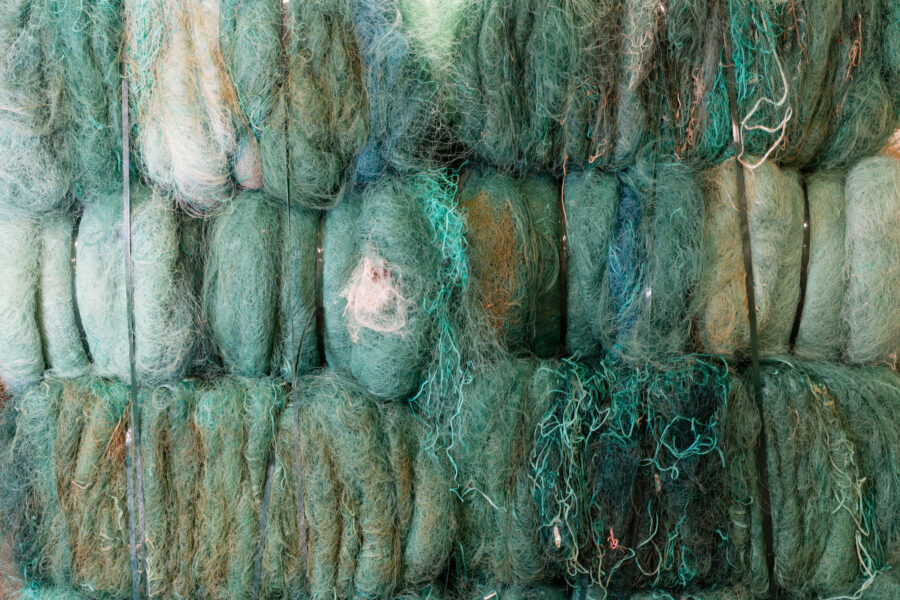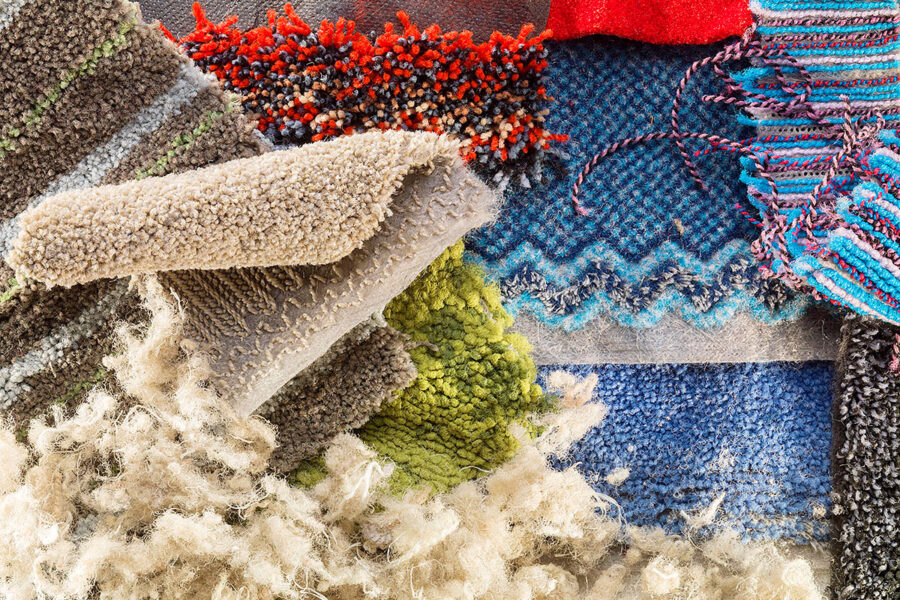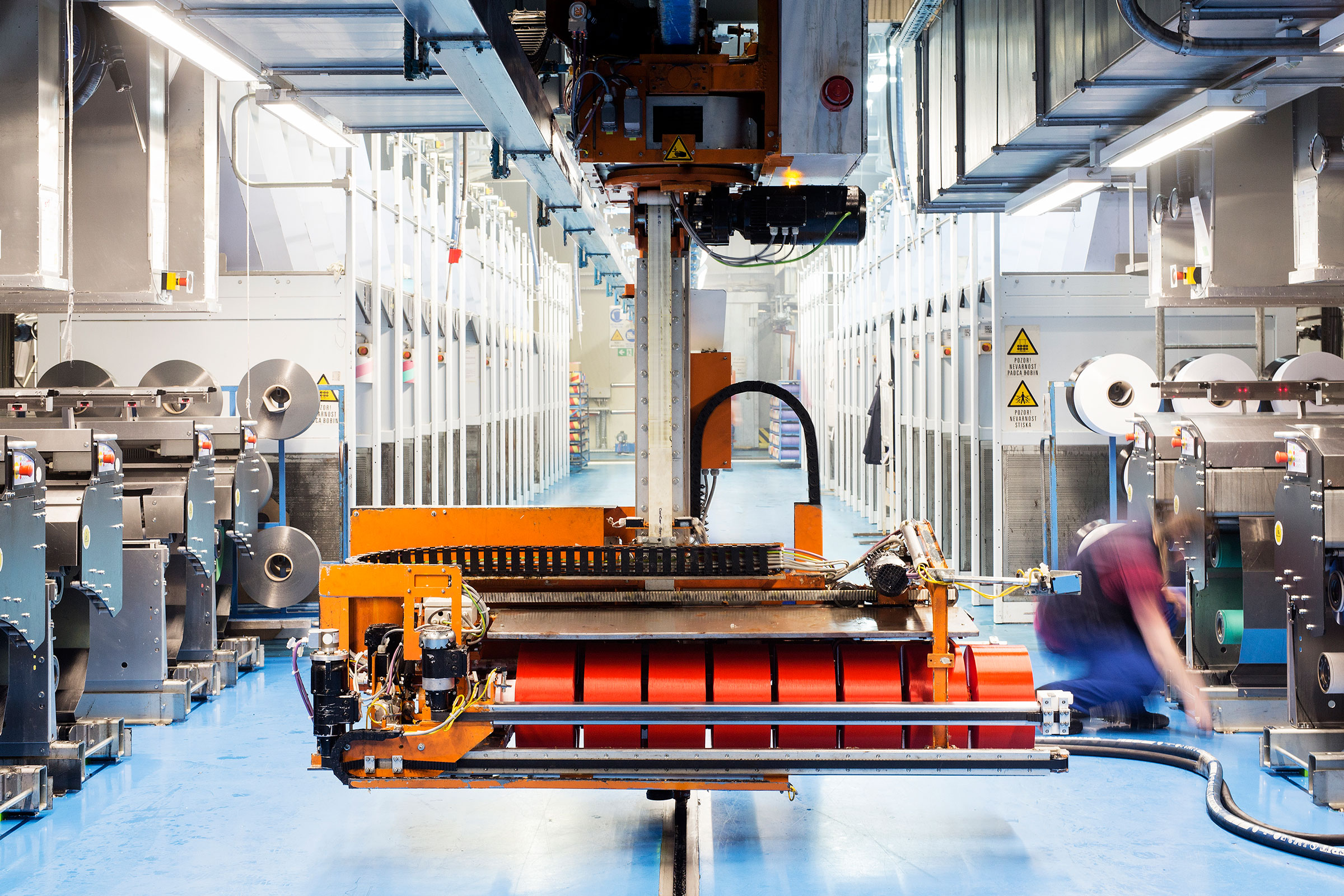Story at a glance:
- Aquafil codifies sustainability in its business model with the ECO PLEDGE, the policy guiding the group’s operations.
- Transparency in business offers companies, including sustainability leaders Aquafil and Patagonia, the opportunity to inspire industry-wide shifts toward more responsible environmental and social practices.
- In Patagonia’s latest clothing line, recycled nylon reduced CO2 emissions by more than 6.6 million pounds compared to non-recycled nylon.
In today’s world many enterprises are genuinely doing their part to support the future of our planet, while many others get by on empty promises and implied environmentalism. “Greenwashing” is not news to the world of sustainable building, and it rears its ugly head in countless consumer-facing industries. In fashion, a UN report found that 60% of sustainability claims by European fashion giants are “unsubstantiated” and “misleading.”
There are, of course, companies genuinely doing the work—and consumers who pay attention to who’s making real progress and who is encouraging further innovation. Two of those companies driving change are Aquafil, the Italian fiber engineering group prioritizing innovation for a more conscious future, and Patagonia, the famously anti-consumerist outdoor clothing and lifestyle brand.
Sustainability via Transparency

Photo courtesy of Aquafil
Sustainability is ingrained in Aquafil Group. Its champion product, ECONYL® regenerated nylon, is made entirely from waste, can be recycled an infinite number of times, and maintains the same quality as standard nylon made from oil but with a much lower environmental impact.
Aquafil collects carpet waste through its US carpet recycling facilities, collects industrial waste from partners around the world, and collaborates with the aquaculture industry to recover fishing nets. As of today ECONYL regenerated nylon has supported more than 1,700 partnering brands, including Patagonia, in their journey toward sustainability.
The ECONYL brand makes leaps toward larger, industry-wide change that Aquafil intends to manifest with its partnerships and advance through education and transparency. By talking about initiatives that impact the environment, Aquafil engages greenwashing’s most formidable enemies: education and transparency.
“Education is a powerful tool, so part of our brand mission is to raise awareness of sustainability issues and help both brands and consumers make more informed decisions about their consumption and lifestyles,” says Aquafil’s CEO Giulio Bonazzi.
Meanwhile, transparency drives Aquafil’s governing bodies, its goal-setting initiatives, and its relationships with its equally-as-dedicated partners across industries—from carpet manufacturers to fashion innovators like Patagonia—at every step.
The clothing and lifestyle brand shares the priority of transparency. “We’ve found that being open about our success—and failures—has helped the company and, in some cases, other businesses, too. The more you can share about what you’ve learned, the more chances you have to inspire industry-wide shifts toward more responsible environmental and social practices,” says Patagonia’s Gin Ando.
Making a Commitment

Photo courtesy of Aquafil
“More and more companies around the world are focusing on Environmental, Social and Governance (ESG) themes and touting their achievements, but very few of them really make sustainability part of who they are. We do not want this to be the case for Aquafil,” Bonazzi says.
Instead Aquafil has encoded sustainability into its mission. Developed in 2008, Aquafil’s ECO PLEDGE consists of five principles that inspire all of Aquafil’s activities and guide its operations. These principles are: rethinking products in a circular perspective; protecting the environment; sharing responsibilities throughout the value chains; caring for the well-being of individuals; and supporting the local communities.
The ECO PLEDGE principles were not chosen at random. “Each one aligns with the UN Sustainable Development Goals (SDGs) to ensure consistency with overarching international agendas and to achieve transparent, effective, and long-lasting responsible growth,” Bonazzi says.
Aquafil selects SDGs to target in a bottom-up approach beginning with evaluating each goal’s impact, then grouping them into macro-themes. A customized software platform collects data among all the Aquafil production plants to track both social and environmental KPIs. With this system Aquafil is able to actively target 11 concrete SDGs through its projects.
Industry-Wide Goals
Bonazzi points to the EU Commission’s Strategy for Sustainable & Circular Textiles in 2022 as a guiding initiative for the textile industry and proof that Aquafil is on track with its efforts. The initiative defines a set of concrete actions to ensure that by 2030 textile products are long-lived, recycled and recyclable, free of hazardous substances, and produced ethically and sustainably.
Aquafil is 20 years ahead of the curve on this one and is thrilled to see governing bodies and textile industry peers following suit. The group voluntarily pursues certifications that back up adherence to the highest environmental, social, and quality standards and has launched numerous initiatives aimed at key EU priorities including eco-design and greenwashing.
“In the last year alone we have spent €10.7 million on R&D activities to develop cutting-edge technologies and circular materials that reduce the industry’s negative impact on the planet,” Bonazzi says. “Our objective for 2025 is to generate 60% of our fibers revenues from ECONYL nylon and other regenerated fibers. We aim to do this by increasing waste recovery, strengthening take-back programs, and educating and communicating our vision to clients.”
The ECO PLEDGE in Action
The Born Regenerated to Be Regenerable, or “Born R2R,” program is one of Aquafil’s most successful recent initiatives. The project engages manufacturers to co-design carpets that are created to be recycled instead of ending up in landfills at the end of their life. These carpets of the future are made with ECONYL nylon and can be fully recycled and repurposed into something new.
Born R2R targets the first three pillars of the ECO PLEDGE. Meanwhile Aquafil is also reducing scope 1, 2, and 3 emissions, uses 100% renewable electricity, and is recovering more than 90% of waste created in production—clear steps toward lessening its impact on the environment.
The ECO PLEDGE principles focused on social change are also seeing progress, as Aquafil contributes to charitable organizations like Alba Chiara APS, a domestic violence protection group, and invests in the future of design by partnering with university programs like New York City’s Parsons School of Design and Burg Giebichenstein University of Art and Design Halle in Germany.
Partnerships for Progress

Patagonia’s Torrentshell jacket uses ECONYL regenerated nylon made entirely from waste. Photo courtesy of Patagonia
Aquafil’s strategic partnerships involve stakeholders across the value chain, including suppliers, manufacturers, designers, and even customers. The key, Bonazzi has told gb&d, is finding partners who integrate sustainability into their business models and are ready to pursue SDGs hand in hand.
Patagonia certainly fits the bill, as the company continues to be dedicated to combating climate change with dozens of social, environmental, and material programs that promise to lessen their impact on the world. Plus the company relies heavily on nylon—light, quick-drying, and durable—for many of its products.
“Using ECONYL recycled nylon is a way to prove to other manufacturers the material can stand up to the high-quality standards we demand in whatever we design and build,” Ando says. Of course, it also makes a marked impact on the sustainability of the brand as a whole.
Ando reports that in Patagonia’s latest line, the use of recycled nylon reduced CO2 emissions by more than 6.6 million pounds compared to non-recycled nylon, according to the Higg Materials Sustainability Index. Partnerships like that of Aquafil and Patagonia allow companies to share their successes—with each other, with customers who wear and love the clothing, and with anyone who cares about sustainable innovations, whether or not they wear Patagonia. They can all see the value of a product and process that can achieve everlasting life through concentrated eco-design for the circular economy.

